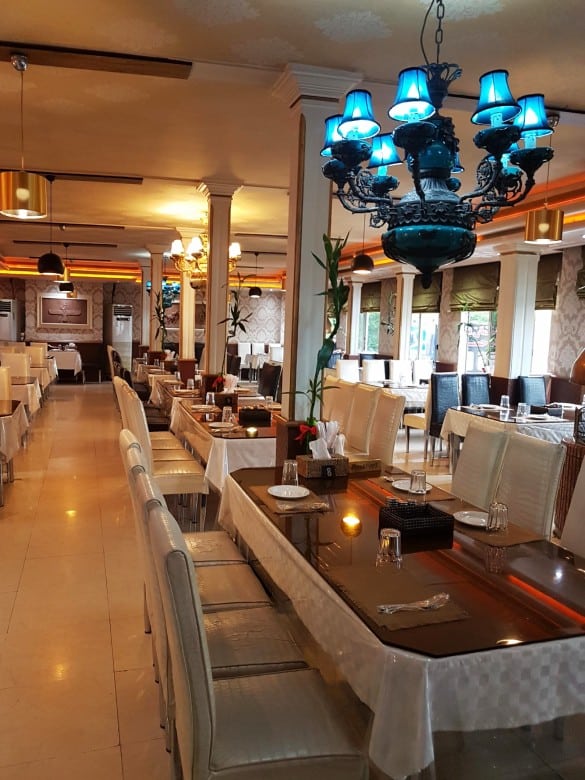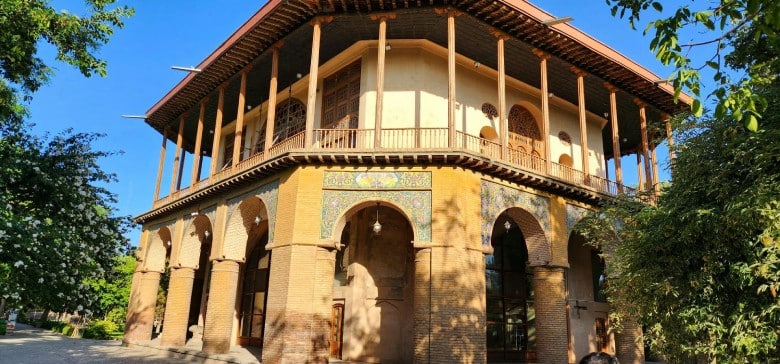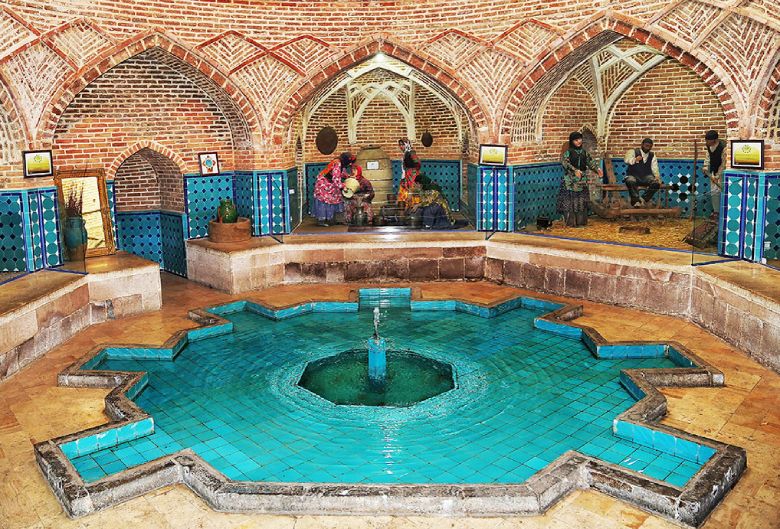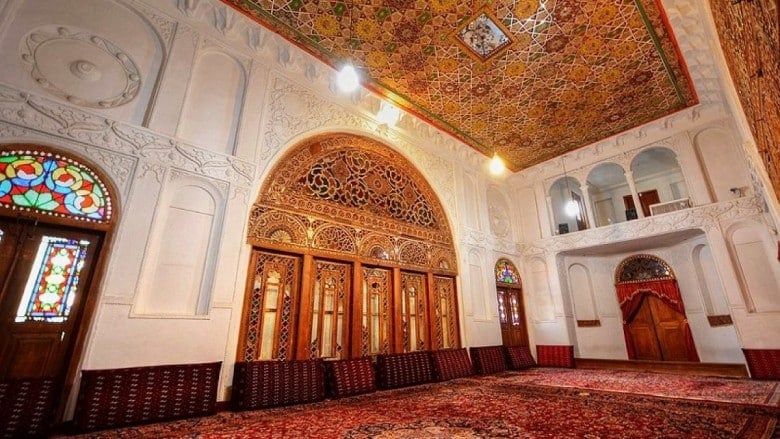
Qazvin, one of the oldest and most beautiful cities in Iran, boasts a rich history and pristine nature, making it a popular travel destination. Due to its proximity to Tehran, many residents of the capital travel to Qazvin for relaxation and sightseeing each year.
In this article, we provide a comprehensive travel guide to Qazvin, covering its history, the best time to visit, access routes, accommodations, local cuisine, and tourist attractions.
Contents
Geographic Location of Qazvin Province

Qazvin Province is located on the southern slopes of the Alborz Mountains, near Tehran. It is bordered to the north by the lush province of Gilan, to the east by Alborz Province, to the west by Zanjan and Hamedan provinces, and to the south by Markazi Province. The average elevation of Qazvin is 1,304 meters above sea level. Positioned in the foothills of the towering Alborz Mountains and having served as the capital of Iran during the Safavid dynasty, Qazvin is one of the most visited cities in the country. Whether you are a nature lover or a history and culture enthusiast, Qazvin can meet all your needs. Historically, Qazvin has served as a passageway connecting the central and western parts of Iran.
This city is considered one of the mountainous regions of the country, experiencing relatively cold winters and mild, cool summers.
History of Qazvin

Qazvin is a historically significant city in Iran. Its construction and flourishing are attributed to Shapur of the Sassanian dynasty. However, archaeological excavations in the Qazvin plain date back to the 7th millennium BCE. In ancient texts, the city is referred to as “Arsacia.” During the Safavid dynasty, Qazvin was the capital of Iran, which is why many historical monuments from this era remain in the city. The oldest planned street in Iran, Sepah Street, is also located in Qazvin. During the Islamic era, Qazvin became one of the country’s scientific centers, further enhancing its prominence.
Best Time to Visit Qazvin
Due to its location on the slopes of the Alborz Mountains, Qazvin experiences relatively cold and snowy winters. The city enjoys mild and relatively cool summers. However, the best time to visit is in spring, particularly in April and May, when the province’s plains and hills are so green that they offer a breathtaking view.
Book Iran Flights
Buy Iran flight tickets at the lowest price
Explore Iran’s culture and history with affordable and reliable flight tickets.
Routes to Qazvin
In this section of the travel guide to Qazvin, we will explore the access routes to this city. Although Qazvin has an airport, air travel to the city is not currently possible. You can reach Qazvin by train, bus, or private car. Both the railway station and bus terminal are located in the southern part of the city. You can take a taxi to the city center. To travel by private car from Tehran, take the Tehran-Karaj-Qazvin highway. The distance from Tehran to Qazvin is 153 kilometers, and the journey takes about 2 hours under normal traffic conditions.
Accommodation in Qazvin
BOOK ONLINE
Iran Hotels
By reading this travel guide to Qazvin, you will learn about the city’s accommodation options. Qazvin offers many lodging choices. During holidays, many people seeking a budget-friendly trip set up tents in the city’s parks. There are also several traditional guesthouses and hotels in Qazvin where you can stay if you prefer more comfort. Below are some of the recommended accommodations in Qazvin.
Marmar Hotel

The 4-star international Marmar Hotel in Qazvin has 45 rooms and suites equipped with state-of-the-art ventilation, modern communication systems, and audio-visual equipment. The hotel also has grand halls for hosting events and ceremonies, as well as restaurants offering a variety of delicious foods. The hotel is very close to the city center, attractions, and shopping centers. The hotel is 1,500 meters from the city center and 5 kilometers from the railway station.
- Address: Qazvin, Valiasr Square, Khamenei Boulevard
- Phone: +98283355771-5
- Website: marmarhotel.com
- See the Location on Google Maps
Alborz Hotel

The 3-star Alborz Hotel in Qazvin was established in 1976. It has 38 rooms, including single rooms, double and twin rooms, triple rooms, and beautifully designed suites with appropriate amenities. The hotel’s location in one of the best areas of the city allows for quick access to attractions and shopping centers.
- Address: Qazvin, Taleghani Street, Khayyam Crossroad, International Alborz Hotel Qazvin
- Phone: +982833227367, +982833225266
- Website: alborzhotel-qazvin.com
- See the Location on Google Maps
Traditional Behrouzi Hotel

This is the first traditional hotel in Qazvin, restored and ready for use in 2014 while maintaining its traditional architecture and atmosphere. The hotel has 12 rooms with traditional decor. The Behrouzi House, a relic from the Qajar era, is registered on Iran’s National Heritage List.
- Address: Qazvin, Imam Khomeini Street, opposite Saadat Bazaar, Karim Asghari Alley, 6th Dead End
- See the Location on Google Maps
Ale Amoot Eco-Lodge

If you prefer to stay outside the city, eco-lodges are a great option. The Ale Amoot Eco-Lodge is located in the Shahrak Village in the Alamut region of Qazvin. The lodge has a capacity of 35 people and features 9 rooms, all equipped with beds. However, the bathroom and toilet facilities are shared and located in the lodge’s courtyard. Other amenities include a private parking area and English-speaking staff.
Food in Qazvin

In this section of the travel guide to Qazvin, we will discuss the city’s culinary delights. We recommend trying the delicious and famous local dishes during your visit. The most renowned dish in Qazvin is “Gheime Nesar,” which can be found in most of the city’s restaurants. The average price of this dish in good restaurants is about 20,000 tomans. Below are some of the best restaurants in Qazvin.
Nemouneh Restaurant

Nemouneh Restaurant is the most famous restaurant in Qazvin. Due to the high quality of its food, it attracts a large crowd for lunch and dinner. The best Gheime Nesar in Qazvin can be found here.
- Address: Qazvin, Bu-Ali Street, Ferdowsi Crossroad, Nemouneh Restaurant
- Phone: +982833352585, +982833336556
- See the Location on Google Maps
Eghbali Restaurant

Another well-known and top-rated restaurant in Qazvin is Eghbali Restaurant. Lunch service here takes about 4 hours, so if you arrive late in Qazvin, this restaurant will be a suitable option for you.
- Address: Qazvin, Taleghani Street, near Khayyam Crossroad
- Phone: +982833223347
- See the Location on Google Maps
Mediterranean Restaurant

If you prefer non-traditional and non-Iranian food, the famous Lebanese Mediterranean Restaurant is a great choice.
- Address: Qazvin, Dehkhoda Street, opposite the gas station, Narvan Shopping Center, third floor
- See the Location on Google Maps
Tourist Attractions in Qazvin
Sepah Street

This street holds the title of the first street built in Iran. Therefore, this travel guide to Qazvin suggests visiting Sepah Street. It was constructed during the Safavid era when Qazvin was the capital of this dynasty. Shah Tahmasp ordered the construction of this street in front of the Ali Qapu Gateway, the entrance to the royal complex. Some of Qazvin’s most important historical attractions are located near this street. Sepah Street is registered as Iran’s first modern street.
At the beginning of this street stands one of the city’s most significant historical monuments, the Ali Qapu Gateway. This gateway is the only remaining entrance from the royal garden of the Safavid era in Qazvin.
Chehel Sotoun Palace

One of the most valuable historical monuments from the Safavid era in Qazvin is the Chehel Sotoun Palace, also known as the Kolah Farangi Mansion. During Shah Tahmasp’s reign, this building and the large garden in which it was located served as the main governing and administrative headquarters of the country. Today, only this mansion and the Ali Qapu Gateway remain from the Safavid garden. The mansion, with a majestic area of 500 square meters, was built over two floors.
Qajar Bathhouse

One of the advantages of this travel guide to Qazvin is the proximity of historical attractions to each other. The Qajar Bathhouse, now a museum of anthropology, is located on Obaid Zakani Street. The bathhouse was built by order of Shah Abbas II of the Safavid dynasty and constructed by Amir Gunah Khan, one of his commanders. The Qajar Bathhouse, also known as the Royal Bathhouse, had separate entrances and sections for men and women. It features beautifully designed sections such as the Sarbineh (changing room), Mian-dar (intermediate room), and Garmkhaneh (hot room). Today, the bathhouse is managed by the Qazvin Cultural Heritage and Tourism Organization. After visiting the bathhouse, you can head towards the bazaar to see the Amineh Mosque.
Kantor Church

Also known as the Bell Tower, Kantor Church was built by the Russians during World War II when Iran was occupied by Russian forces. The brick decorations and distinctive color of the church’s facade set it apart from other historical buildings in the city.
Qazvin’s Water Reservoirs

Like other Iranian cities, Qazvin has numerous water reservoirs. The Sardar-e Bozorg Water Reservoir is one of the largest in Iran and is open to visitors. Other notable reservoirs include the Haj Kazem Water Reservoir on Tabriz Street and the Jameh Mosque Water Reservoir in Qazvin. Many of these reservoirs feature architectural masterpieces such as exquisite tile work, arches, and beautiful windcatchers. To visit a reservoir, you typically need to descend about 50 steps and then enter the cool environment. Ask local guides or the ticket sales staff to explain how these reservoirs were used in the past, as it can be an interesting topic for you and your children.
Jameh Mosque of Qazvin

This very old mosque is located on the famous Sepah Street. The Jameh Mosque of Qazvin is considered the oldest grand mosque in Iran. Also known as the Atigh Mosque, it is registered on Iran’s National Heritage List. The historical mosque was built on the remains of a Sassanian fire temple. Harun al-Rashid ordered the construction of this mosque in 192 AH. The mosque features beautiful brickwork and tile work decorations.
Hoseynie Aminiha

During the Qajar era, this mosque was the home of the wealthiest person in Qazvin, Haj Mohammad Reza Amini. He used the best architects, woodworkers, plasterers, and mirror workers for the construction of this house. The house has several courtyards, two of which contain rooms with orosi (traditional wooden lattice) doors. The most interesting part of the house is the orosi doors, which can be completely removed from their frames during Ramadan or religious ceremonies to combine all spaces. The carpets in the orosi rooms were specially designed and woven for these rooms. Today, the house belongs to the descendants of Haj Amini and is constantly being renovated. To visit the house, go to Molavi Street and ring the bell. If you are traveling with a tour group, this house will likely be one of your stops. You can plan your visit to this house after visiting the Qajar Bathhouse and on the way to the bazaar.
Alamut Castle and Evan Lake

The Alamut region of Qazvin is one of the most beautiful areas in western Iran. The region is home to numerous historical castles belonging to the Ismailis, the most famous of which is Alamut Castle. This historical fortress, which served as the stronghold of Hassan-i Sabbah, is located northeast of the village of Gazorkhan, perched on a cliff 2,163 meters high. Near the castle, you will find one of Iran’s most beautiful natural lakes, Evan Lake. Situated 75 kilometers from Qazvin at an altitude of 1,850 meters above sea level, the lake attracts many tourists each year who visit the Alamut region of Qazvin.
Souvenirs of Qazvin
In this section of the travel guide to Qazvin, we will introduce the city’s souvenirs. Qazvin’s handicrafts and delicious sweets are the most notable souvenirs you can buy. To purchase the province’s handicrafts, including filigree work, engraving, and more, visit the Sa’d al-Saltaneh Caravanserai on Imam Khomeini Street.
To buy Qazvin’s famous sweets, you can visit the city’s confectioneries, such as Parastu Confectionery on Bu-Ali Street. The most famous sweets in Qazvin are Baklava and Naan-e Naan (thin bread).





